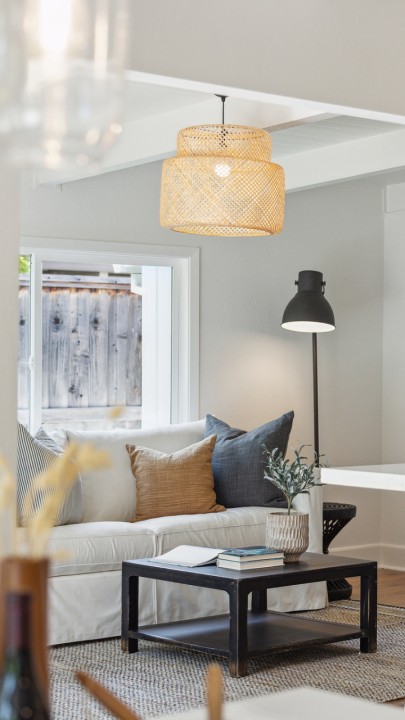The High Cost Of Entry: Down Payments And Canadian Homeownership

Table of Contents
Understanding the Down Payment Requirement in Canada
The minimum down payment required in Canada depends on the purchase price of the home. These percentages directly impact your mortgage and the type of mortgage insurance you'll need. Understanding these requirements is the first step in planning your home purchase.
- 5% down payment: Applies to homes priced under $500,000. This requires CMHC insurance, which protects lenders against losses if you default on your mortgage. Expect to pay a higher insurance premium with a smaller down payment.
- 10% down payment: Required for homes priced between $500,000 and $1 million. While still requiring CMHC insurance, the premium will be lower than with a 5% down payment.
- 20% down payment: For homes priced over $1 million, a 20% down payment is typically required. This often eliminates the need for CMHC insurance, leading to lower overall mortgage costs.
CMHC insurance, provided by the Canada Mortgage and Housing Corporation, is crucial for buyers with less than 20% down. While it allows access to a mortgage, it adds to the overall cost of borrowing. The higher the loan-to-value ratio (the amount borrowed compared to the home's value), the higher the CMHC insurance premium.
Saving Strategies for a Canadian Down Payment
Saving for a down payment requires discipline and a well-defined strategy. Several financial vehicles can assist in this process:
- High-Interest Savings Accounts (HISAs): These accounts offer better interest rates than regular savings accounts, helping your money grow faster. Shop around for the best rates.
- Tax-Free Savings Accounts (TFSAs): Contributions to TFSAs are tax-deductible, and the investment growth is tax-free, making them an excellent vehicle for long-term savings.
- Registered Retirement Savings Plans (RRSPs): While primarily for retirement, the First-Time Home Buyers' Plan (HBP) allows you to withdraw a portion of your RRSP contributions tax-free for a down payment.
First-Time Home Buyers’ Plan (HBP): The HBP allows first-time homebuyers to withdraw up to $35,000 from their RRSPs ($70,000 for a couple) to use towards a down payment. It's important to understand the repayment terms; you have 15 years to repay the withdrawn amount back into your RRSP.
Other crucial strategies include:
- Budgeting and expense tracking: Identify areas where you can cut back on spending to boost your savings.
- Maximizing contributions: Contribute the maximum allowed to your TFSAs and RRSPs each year.
Alternative Down Payment Options
Saving a large down payment can take time. Consider these alternative options:
- Gifts from family: A gift from family can significantly accelerate your savings. However, ensure you have proper documentation (gift letters and proof of funds) to satisfy lenders.
- Utilizing home equity: If you own another property, you might be able to use the equity (the difference between the property's value and your outstanding mortgage) as a down payment.
- Co-purchasing: Partnering with another buyer to purchase a property can reduce the individual down payment requirement. However, this involves shared responsibilities and potential legal complexities.
The Impact of Rising Interest Rates on Down Payments
Rising interest rates directly affect affordability. Higher rates increase the overall cost of borrowing, potentially requiring a larger down payment to qualify for a mortgage.
- Higher interest rates = higher mortgage payments: A larger down payment can help offset higher interest rates by lowering the amount borrowed.
- Adjusting savings goals: You may need to adjust your savings plan based on interest rate changes, potentially requiring a longer savings period.
- Pre-approval: Getting pre-approved for a mortgage provides insights into your borrowing power, helping to tailor your savings goals.
The Long-Term Financial Implications of Down Payments
The size of your down payment significantly impacts your mortgage.
- Larger down payment = lower monthly payments: A bigger down payment reduces the principal amount of the loan, leading to lower monthly mortgage payments.
- Reduced overall interest paid: A larger down payment means less interest paid over the life of your mortgage, saving you money in the long run.
- Improved financial stability: Lower monthly payments and reduced interest payments contribute to greater financial stability and reduced stress.
Conclusion
Successfully navigating the high cost of entry in the Canadian housing market, specifically the hurdle of securing sufficient down payments, requires careful planning and strategic financial management. Understanding the different down payment options available, implementing effective savings strategies, and acknowledging the long-term financial implications are crucial steps in achieving Canadian homeownership. By carefully considering the information presented here and seeking professional financial advice where necessary, prospective homebuyers can increase their chances of securing a mortgage and realizing their dream of owning a home. Don't let the challenge of down payments deter you – start planning your financial strategy today!

Featured Posts
-
 Investing In Palantir After A 30 Market Correction
May 10, 2025
Investing In Palantir After A 30 Market Correction
May 10, 2025 -
 New Bot Governor Crucial As Thailand Tackles Tariff Hikes
May 10, 2025
New Bot Governor Crucial As Thailand Tackles Tariff Hikes
May 10, 2025 -
 Les Miserables Cast May Boycott Trumps Kennedy Center Appearance
May 10, 2025
Les Miserables Cast May Boycott Trumps Kennedy Center Appearance
May 10, 2025 -
 Ma Hw Tathyr Antqal Fyraty Ela Adae Alerby Alqtry
May 10, 2025
Ma Hw Tathyr Antqal Fyraty Ela Adae Alerby Alqtry
May 10, 2025 -
 Frantsiya I Polsha Novoe Oboronnoe Soglashenie Signal Dlya Trampa I Putina
May 10, 2025
Frantsiya I Polsha Novoe Oboronnoe Soglashenie Signal Dlya Trampa I Putina
May 10, 2025
